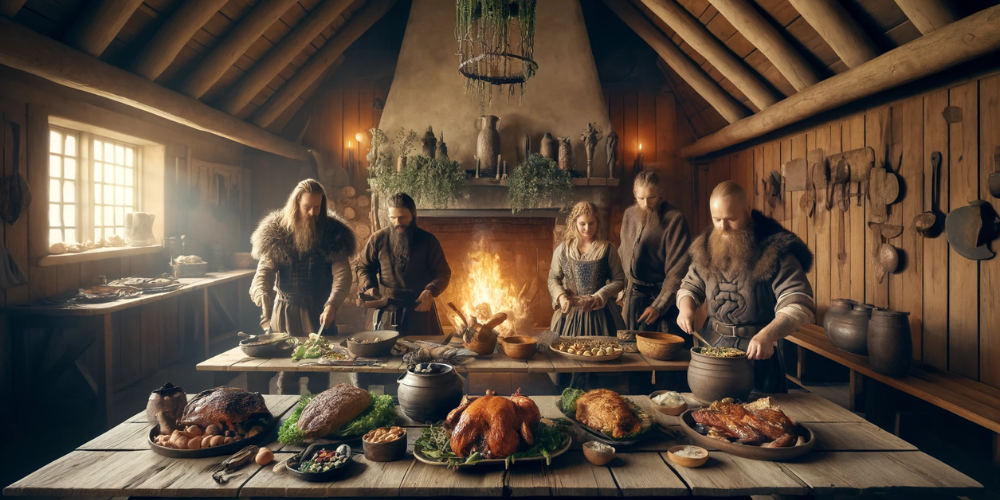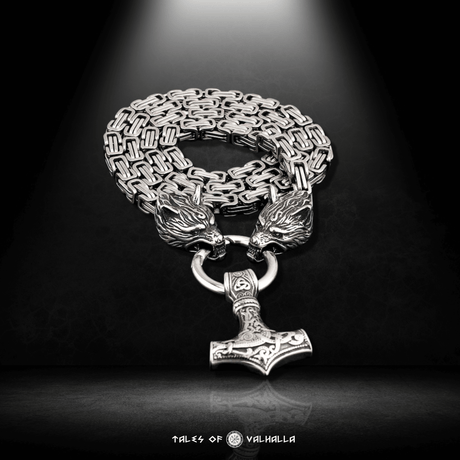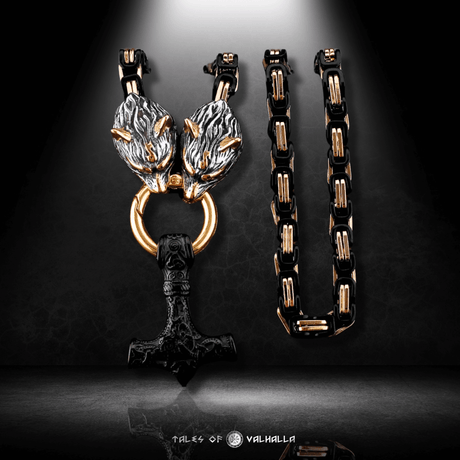When we think of Vikings, images of fierce warriors often come to mind. However, there was much more to Viking life than battles and conquests. Food played a central role in Viking society, reflecting their agricultural lifestyle and the harsh climates they endured. Today, we’ll explore what Vikings ate and how you can prepare some of these ancient dishes in a modern kitchen. Here are 8 delicious, authentic Viking recipes that will transport you back to the era of longships and sagas.
1. Viking Flatbread (Hviti Brauð)

Flatbreads were a staple in the Viking diet due to their simple ingredients and quick cooking process. These could be made from barley, oats, or rye.
Ingredients:
- 2 cups rye flour
- 1 cup barley flour
- Water (enough to form a dough)
- Pinch of salt
Instructions:
- Mix the flours and salt in a large bowl.
- Gradually add water until the mixture forms a firm dough.
- Divide the dough into small balls and flatten them into discs.
- Cook over a dry skillet or hot stone until each side is golden brown.
Enjoy this hearty bread with some butter or as a side to a larger meal.
2. Grilled Lamb with Viking Herbs (Lambakjöt með Jurtum)

Meat was a luxury for Vikings and was often cooked with local herbs and spices. This grilled lamb recipe incorporates traditional Viking-style seasonings.
Ingredients:
- 2 lbs lamb chops
- 2 tbsp olive oil
- 1 tsp each of thyme, sage, and dill
- Salt and pepper to taste
Instructions:
- Preheat your grill or skillet.
- Rub the lamb chops with olive oil and season with herbs, salt, and pepper.
- Grill the chops to your desired doneness, typically about 4-5 minutes per side for medium-rare.
Serve with a side of vegetables and flatbread for a true Viking feast.
3. Viking Fish Stew (Fiskasúpa)

Given their expertise in fishing, it’s no surprise that fish was a common Viking meal. This hearty stew would warm them on cold nights.
Ingredients:
- 2 lbs mixed fish (like cod, haddock), cut into chunks
- 1 large onion, chopped
- 4 cups fish or vegetable broth
- 2 cups diced root vegetables (carrots, parsnips)
- 1 cup leeks, sliced
- 1 tsp dill
- Salt and pepper to taste
Instructions:
- In a large pot, sauté the onion and leeks until translucent.
- Add the root vegetables and cook for another 5 minutes.
- Pour in the broth and bring to a boil. Reduce heat and let simmer until vegetables are tender.
- Add the fish and dill. Cook for another 10 minutes or until the fish is cooked through.
Enjoy this delicious stew with a slice of flatbread.
4. Pickled Herring (Súrsild)

Preserving food was essential for surviving the harsh winters. Pickled herring is a classic example of Viking ingenuity in food preservation.
Ingredients:
- 1 lb fresh herring, cleaned and filleted
- 1 cup white vinegar
- 1 cup water
- 1 tbsp each of sugar and salt
- 1 tsp black peppercorns
- 1 onion, thinly sliced
Instructions:
- In a saucepan, combine vinegar, water, sugar, salt, and peppercorns. Bring to a boil.
- Place the herring fillets in a jar and layer with the sliced onion.
- Pour the hot vinegar mixture over the herring until fully covered.
- Seal the jar and refrigerate for at least 48 hours before eating.
This tangy fish is perfect as a snack or part of a larger meal.
5. Roasted Root Vegetables (Rótargrænmeti)

Root vegetables were a mainstay in the Viking diet, as they could be stored throughout the winter.
Ingredients:
- 3 cups mixed root vegetables (beets, carrots, turnips), chopped
- 2 tbsp olive oil
- 1 tsp each of thyme and rosemary
- Salt and pepper to taste
Instructions:
- Preheat your oven to 400°F (200°C).
- Toss the vegetables with olive oil, herbs, salt, and pepper.
- Spread them on a baking sheet and roast for about 30-40 minutes, or until tender and caramelized.
This dish is a simple, nutritious side that complements any Viking meal.
6. Berry Soup (Berjasúpa)

Berries were a popular sweet treat and source of nutrition for Vikings. This warm berry soup can be enjoyed as a dessert or a sweet snack.
Ingredients:
- 4 cups mixed berries (blueberries, raspberries, blackberries)
- 2 cups water or apple juice
- 1/2 cup sugar
- 2 tbsp cornstarch dissolved in 2 tbsp water
Instructions:
- In a pot, combine berries, water/juice, and sugar. Bring to a simmer.
- Add the cornstarch mixture, stirring constantly, until the soup thickens.
- Serve warm or chilled, depending on preference.
This sweet, tangy soup is a delightful end to any feast.
7. Honey Glazed Turnips (Hunangsglæðar Snæpurnar)

Honey was used by Vikings to sweeten dishes. This simple recipe highlights the natural sweetness of turnips.
Ingredients:
- 2 lbs turnips, peeled and cubed
- 2 tbsp honey
- 2 tbsp butter
- Salt to taste
Instructions:
- Boil the turnips until tender, about 20 minutes.
- Drain and return to the pot.
- Add honey, butter, and salt, and cook over low heat until glazed and golden.
Serve hot as a delightful side dish.
8. Mead (Mjöður)

No Viking feast would be complete without mead, the classic honey-based alcoholic drink.
Ingredients:
- 1 gallon water
- 1.5 lbs honey
- 1 packet yeast
- Optional: spices like cinnamon or cloves
Instructions:
- In a large pot, heat water and honey until well combined. Do not boil.
- Cool the mixture to room temperature, then add yeast.
- Pour into a fermentation container, seal, and allow to ferment for at least six weeks before bottling.
Enjoy this ancient beverage responsibly!
Conclusion
Recreating these Viking recipes offers a delicious way to connect with history. Whether you're hosting a themed dinner or simply want to try something new, these dishes provide a taste of Viking life that is both educational and enjoyable. Remember, the key to Viking cooking is simplicity and making the most of available ingredients. Skål! (Cheers!)






























































































